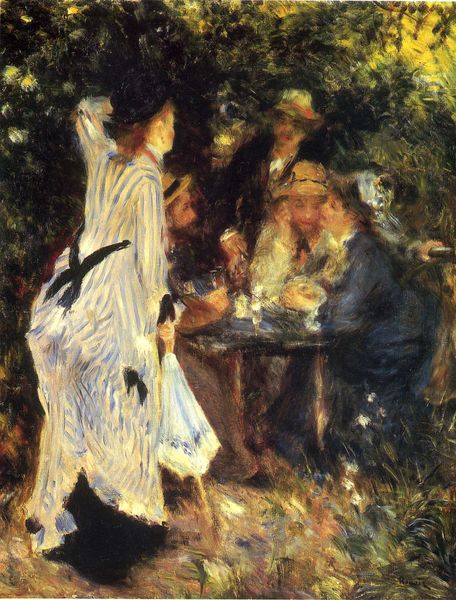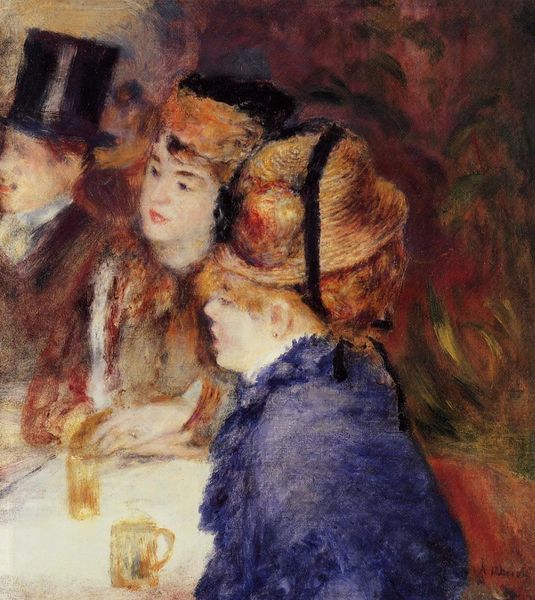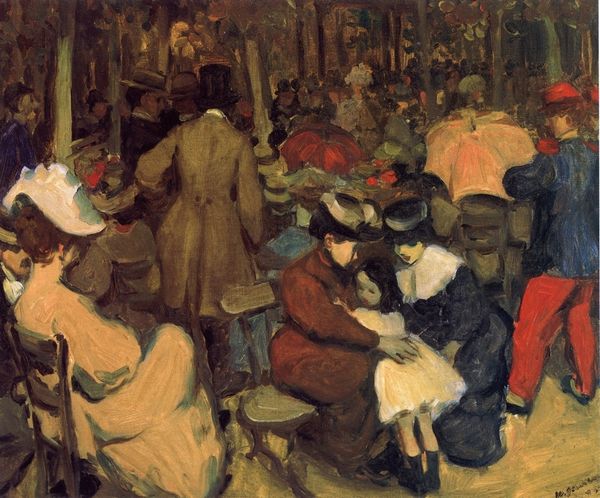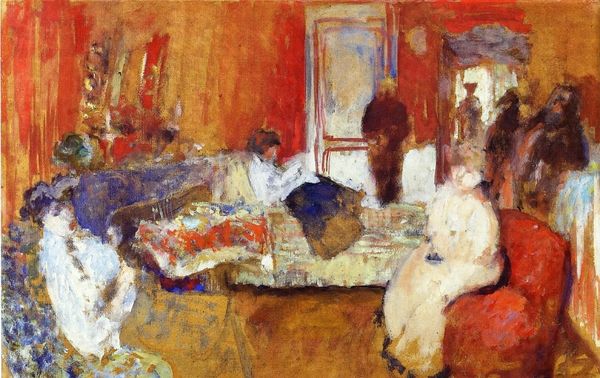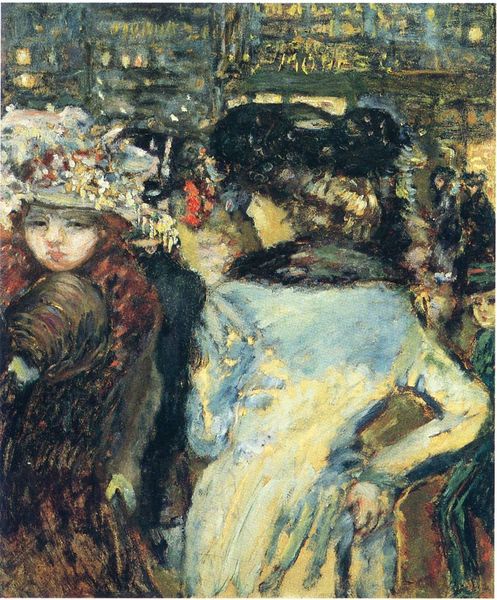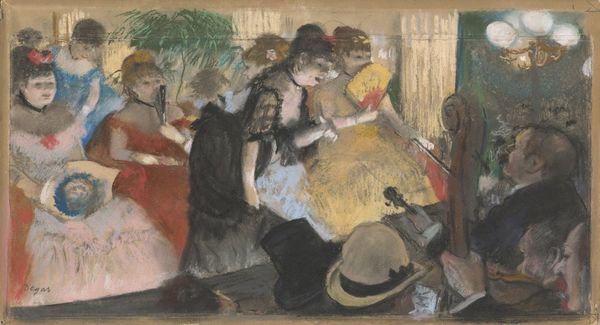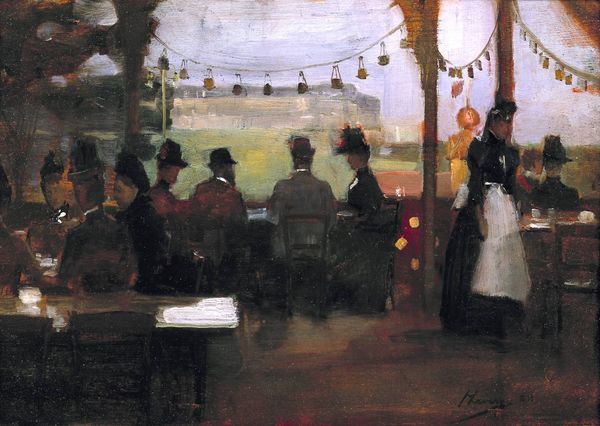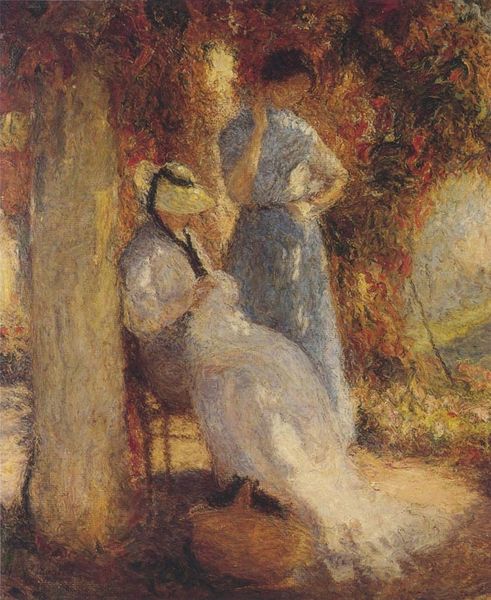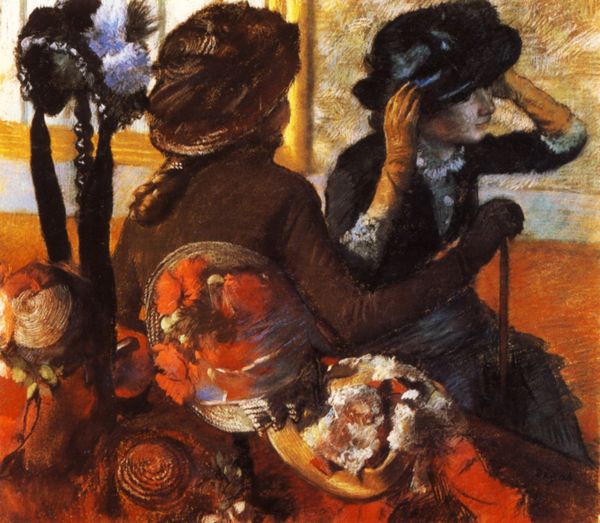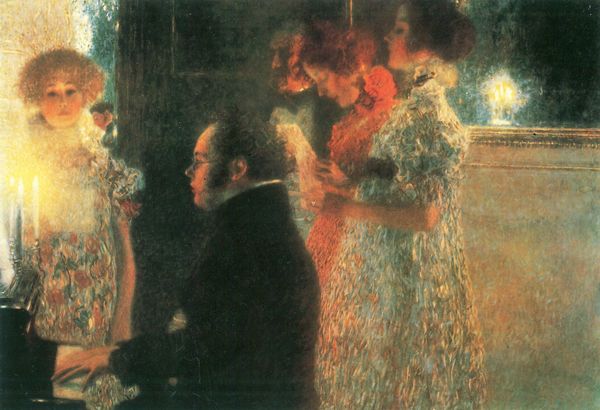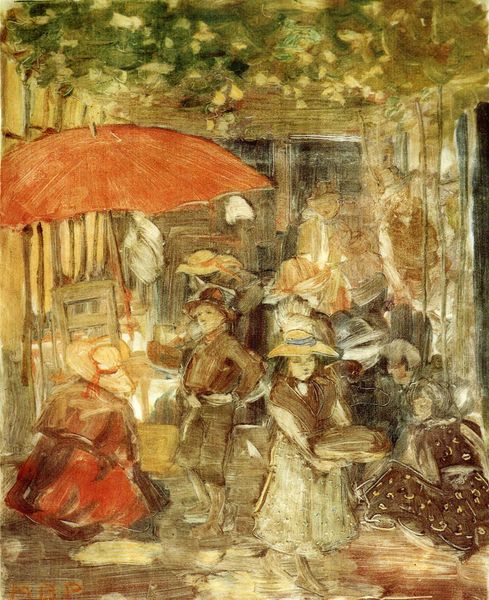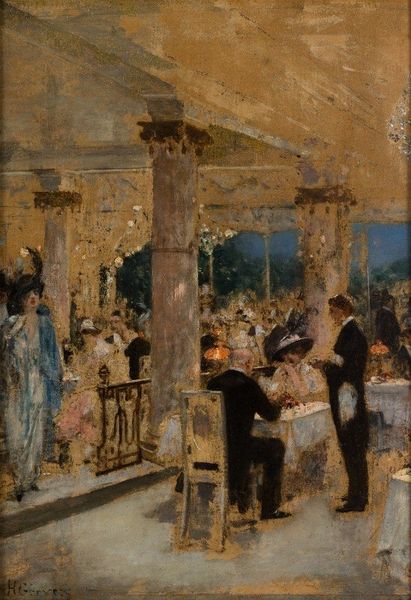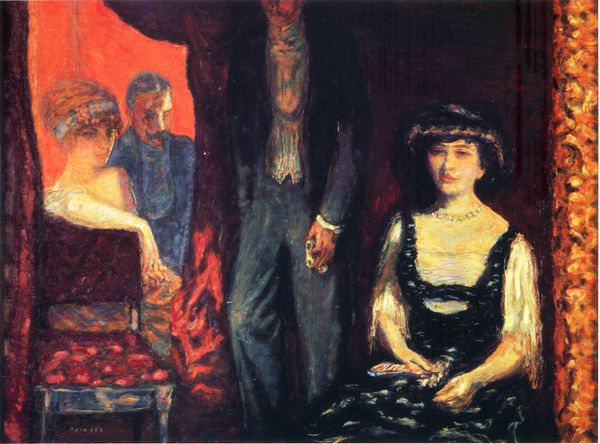
Copyright: Public domain
Editor: Glackens's 1906 painting, "Café de la Paix," renders a Parisian café scene with oil on canvas. There’s a sort of intimate, shadowy quality to it despite the bustling subject matter. What stands out to you in its composition? Curator: I note first the layering of planes, establishing depth and guiding the eye. Observe how the artist organizes the foreground figures with considerable clarity in contrast to the obfuscated background with muted colors of black and brown that hint at distant figures in horse carriages. What impression does this create? Editor: It almost feels as if we're intruding on a private moment, separate from the outside bustle. Are there other details in the composition that enhance this? Curator: Indeed. The thick impasto application catches the light and brings life to these anonymous figures. Look closely at the interplay of warm and cool tones. What does the dynamic between light and shadow suggest about Glackens’ intentions? Editor: Maybe he aimed to capture a sense of momentary feeling rather than objective reality? Like a snapshot of a feeling. Curator: Precisely. He exploits formal means, eschewing pure representation for emotive evocation. The formal dynamics result in a heightened subjective impression on the viewer. Notice also how the gaze of all subjects is turned away or lowered in contrast to other Impressionist café scenes, enhancing a mood of melancholic contemplation. Editor: This focus on individual perception definitely shapes the piece's unique voice within Impressionism. I hadn’t quite noticed that subtle use of directionality before. Thanks! Curator: My pleasure. Examining these intrinsic formal features often yields unforeseen levels of insight into a painting.
Comments
No comments
Be the first to comment and join the conversation on the ultimate creative platform.
